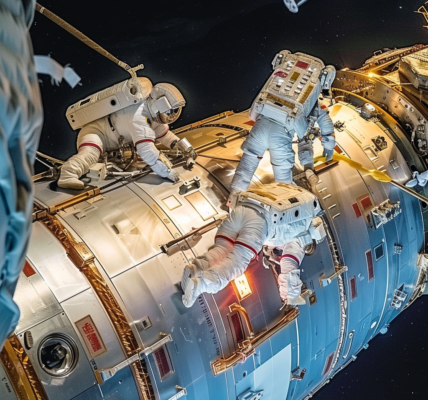In the realm of space operations, the ability to effectively monitor and predict solar weather is becoming increasingly vital. As satellite operators grapple with the challenges posed by solar phenomena, advancements in technology are paving the way for enhanced decision-making capabilities. A recent scenario highlights the critical need for accurate space weather forecasting, particularly when it comes to tracking adversarial satellites in low Earth orbit (LEO).
Consider a situation where a network of ground sensors successfully identifies a newly launched reconnaissance satellite in very low Earth orbit, situated at an altitude of 350 kilometers. This satellite, equipped with high maneuverability, poses a potential threat. Suddenly, a powerful solar flare erupts, causing the atmosphere to heat up and increasing the drag force on the satellite. As a result, it begins to descend into a lower orbit, prompting urgent efforts to locate it.
According to Matt Shouppe, a leader in Booz Allen’s space business, the challenges of managing satellite operations during a solar storm are significant. He emphasizes that adversaries are aware that their satellites become more difficult to track during such events, creating an opportune moment for them to execute covert operations.
One of the key factors in mitigating these challenges lies in the ability to accurately forecast space weather. Improved predictions regarding solar phenomena can significantly enhance the understanding of how such events will impact satellite operations. However, as Shouppe points out, forecasting solar activity 12, 24, or even 48 hours in advance has long been a complex undertaking.
To tackle this issue, researchers are increasingly turning to machine learning (ML) techniques. A wealth of data from NASA’s Solar Dynamics Observatory (SDO) is now available for analysis, with the observatory capturing images of the sun every 12 seconds. This extensive dataset serves as a foundation for training algorithms that can better predict solar events.
The open-source nature of these resources is particularly beneficial, as it allows scientists to build upon existing research and technologies. Dr. Jeremy Bundgaard, a physicist at Booz Allen, notes that many researchers have been developing computer vision modeling techniques for solar phenomena. This collaborative environment fosters innovation, enabling scientists to explore uncharted territory in solar forecasting.
One promising avenue for enhancing predictive capabilities is the use of autoencoders in machine learning. These neural networks are designed to compress and represent unlabeled data, facilitating unsupervised learning. Their efficiency allows for the rapid detection of anomalies and patterns within large datasets.
Bundgaard’s team has adapted a transformer autoencoder training scheme to accelerate the application of machine learning to publicly available data. They have ingested a vast dataset from the SDO, comprising 300,000 images captured over a decade across nine high-resolution wave bands. These bands correspond to specific chemical lines in the sun, which are closely linked to the radiation that affects Earth.
Through this innovative approach, researchers can visualize sunspots and solar flares, enabling them to train models to better predict future solar activity. The implications of such advancements are profound, as they could lead to more effective strategies for satellite operators to navigate the complexities of space weather.
As the demand for reliable space weather forecasts continues to grow, the integration of machine learning techniques into solar research is poised to revolutionize the field. By leveraging open-source data and advanced modeling techniques, scientists are making strides toward enhancing our understanding of solar phenomena and their impact on satellite operations.
In an era where space is increasingly contested, the ability to anticipate and respond to solar weather events is essential for maintaining operational advantage. The ongoing efforts to refine predictive models and harness the power of machine learning underscore the importance of innovation in the face of evolving challenges.





